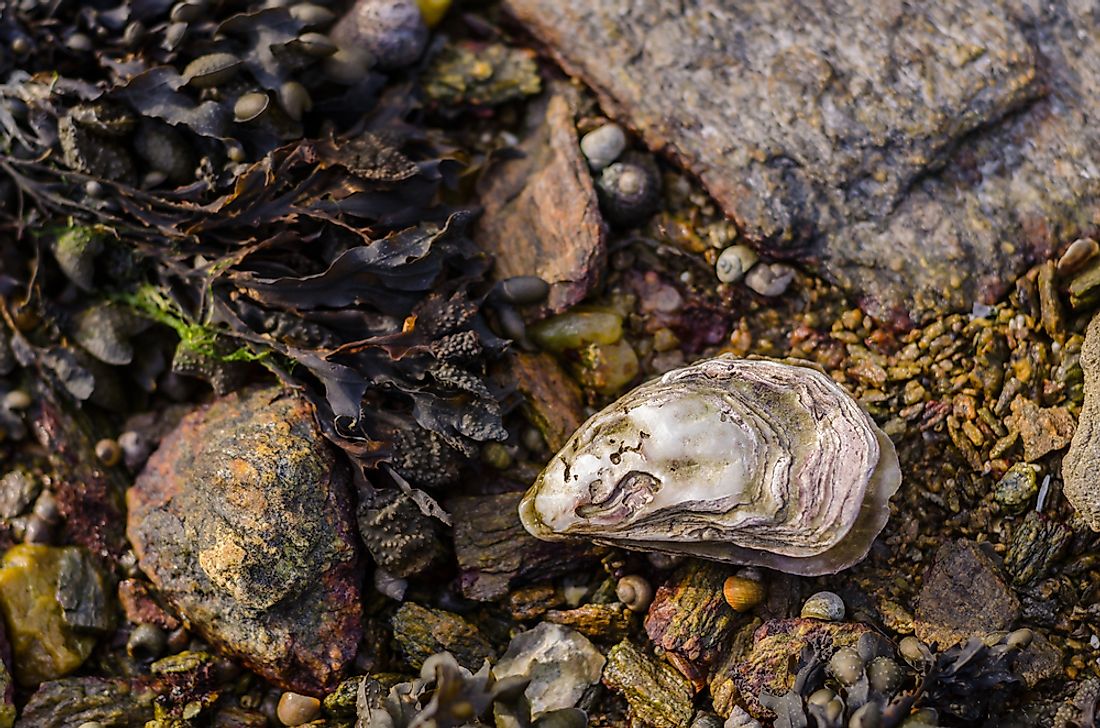Oyster Facts: Animals of the Oceans

Oysters come from the scientific class called bivalve meaning; having two shells. Oysters are of the Ostrea genus. Named during the 14th century, the term ‘oyster’ was derived from the old French word ‘oistre.' There is a myriad of oysters in our oceans including saddle oysters, true oysters, pearl oysters, dimydarian oysters, and thorny oysters to name but a few. The Pinctada maxima are the world’s largest pearl-bearing oyster. The Chesapeake Bay is one of the water bodies that produce the highest numbers of oysters in the United States.
Habitat and Range
With the ability to tolerate a wide range of salinities, oysters normally live in the marine or salty water called brackish. The oyster is immobile and will never change locations in its lifetime unless disturbed by humans or strong waves. Finding settlement locations in bays, sheltered mangroves, and inlets, these environments offer sufficient protection from heavy storms. The availability of rich organic matter in such environs makes them some of the preferred residing areas for the oysters. When oysters are living together in one group it is termed as an oyster reef or bed. Some of the well-known predators of the oysters include humans for food and other valuables, starfish, crabs, and seabirds. Worldwide, the oyster habitat has significantly decreased by 80 percent. Restoration efforts are underway to create a healthy ecosystem where oysters can thrive.
Physical Description
The oyster is bivalve meaning that it has two shells called mollusks. Each valve is relatively thick with a purple or greyish color on the outside and a white color on the inside. Of the two valves of the oyster, the right-side valve is shorter, and the left-side valve is longer. The left valve being long and more rounded normally attaches itself to a surface in the inhabitant creating enough space for other animals to live. The oyster has tinny teeth located at the hinge of the two valves. The mantle edges and muscles of the oyster have a pale color. This helps in the absorption process and purification of water in the ocean. Through this process, the oysters can provide vibrant ecosystems to other ocean animals.
Diet
When feeding, an oyster normally filters off a lot of water as it engages in the processes of exchanging oxygen and carbon dioxide which is essential to its survival, growth, and development. Using their gills, the oysters absorbs oxygen and other suspended foods. A single adult oyster can filter close to 50 gallons of water in a one day which greatly contributes to the overall cleansing of the water in the oceans.
Behavior
When in the resting state, the oyster normally shuts its valves, this occurs regardless of then being fully submerged. This behavior is greatly influenced by the position of the sun and moon in circa tidal rhythms. When there are neap tides, the oysters shut their valves for a longer time in comparison to during spring tides. The mangrove oyster, one of the tropical oysters, usually grows well on the roots of the mangrove.
Reproduction
Oysters attain their maturity when they are one year old. Classified as protandric, an oyster can change from being a male to being a female in their lifespan through spawning. This occurs when an oyster in its first year, releases sperms directed into the water and when it reaches year 2-3, it changes into a female and produces eggs. The European oyster and Olympia oyster are known to have both sexes with their reproductive organs containing both the eggs and sperm at the same time. The change in water temperature normally prompts the spawning processes. One oyster can produce close to 100 million eggs in one year. The eggs are then fertilized, grow into larvae, and locate suitable secure places to attach so that they mature without any disturbance.











